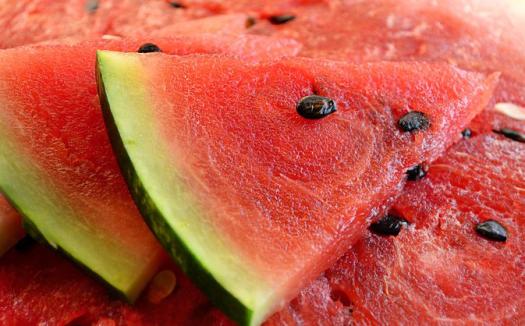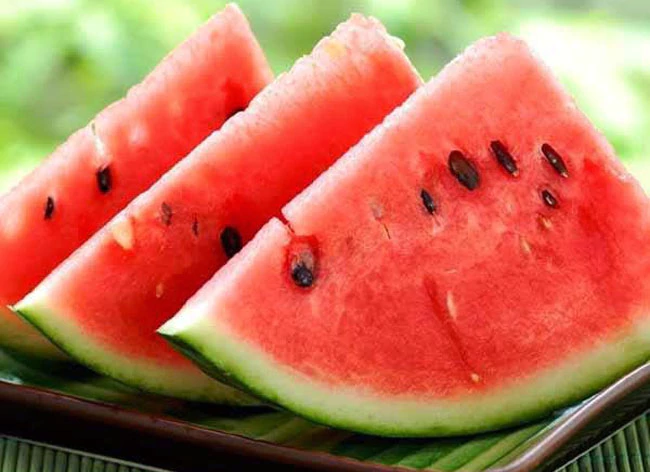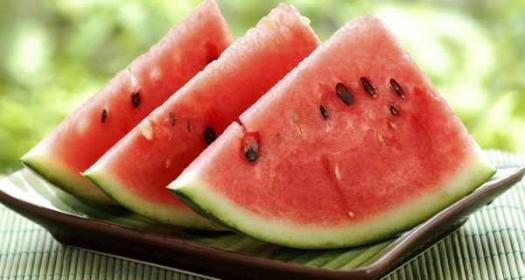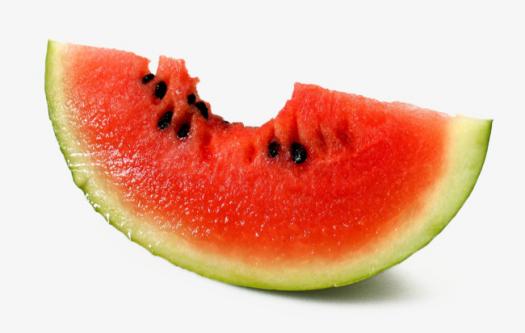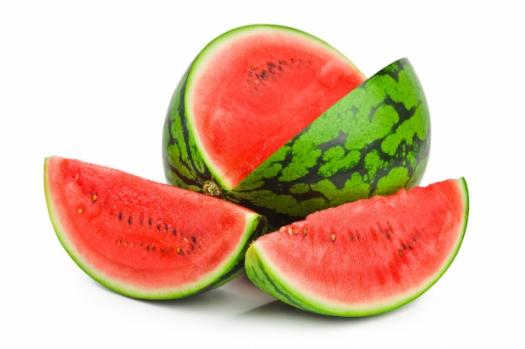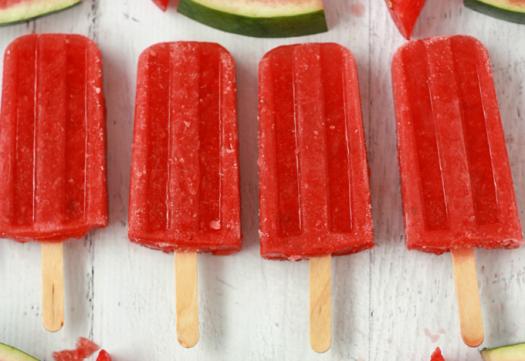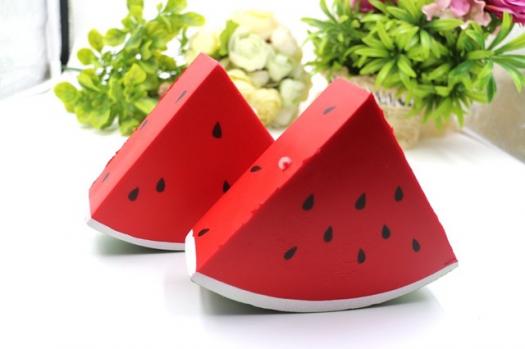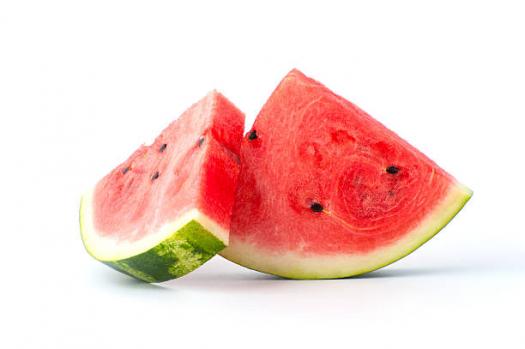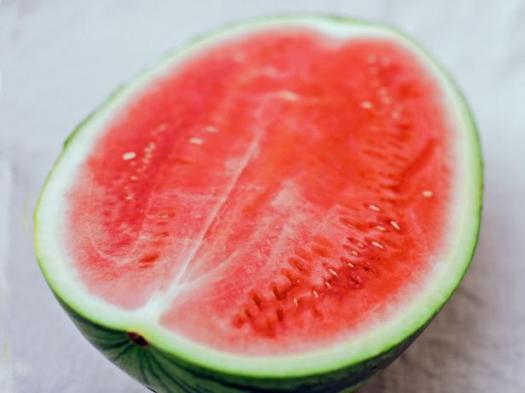How Well Do You Know Watermelon?

The species was long thought to have originated in southern Africa, but this was based on the erroneous synonymization by L. H. Bailey (1930) of a South African species with the cultivated watermelon. The error became apparent with DNA comparison of material of the cultivated watermelon seen and named by Linnaeus and the holotype of the South African species.
- 1.
Watermelons is a fruit that grows ....
- A.
Annually
- B.
Monthly
- C.
Weekly
- D.
In two years
Correct Answer
A. AnnuallyExplanation
Watermelons are a fruit that grows annually. This means that they have a life cycle that lasts for one year. From planting the seeds to harvesting the fruit, the entire process takes approximately one year. During this time, the watermelon plant goes through various stages of growth, including the development of flowers, pollination, and fruit formation. Once the watermelons are fully grown and ripe, they can be harvested and enjoyed. Therefore, the correct answer is annually.Rate this question:
-
- 2.
The colour of juicy flesh of watermelon is ...
- A.
Green
- B.
Yellow
- C.
Red
- D.
Orange
Correct Answer
C. RedExplanation
The colour of the juicy flesh of watermelon is red. Watermelon is known for its vibrant red flesh, which is sweet and refreshing. The red color is due to the presence of a pigment called lycopene, which is also found in other red fruits such as tomatoes. Lycopene is a powerful antioxidant that is beneficial for our health. Therefore, the correct answer is red.Rate this question:
-
- 3.
The watermelon is a flowering plant that originated in ...
- A.
West Africa
- B.
South Africa
- C.
Northeast Africa
- D.
Southwest Africa
Correct Answer
C. Northeast AfricaExplanation
The correct answer is Northeast Africa. The watermelon is believed to have originated in Northeast Africa, specifically in the region of Sudan. Archaeological evidence suggests that watermelons were cultivated in ancient Egypt as early as 4000 BC. From there, the cultivation of watermelons spread to other parts of Africa and eventually to other continents through trade and exploration. Today, watermelons are grown in various parts of the world, but their origins can be traced back to Northeast Africa.Rate this question:
-
- 4.
Watermelons were being cultivated in India in what century?
- A.
8th century
- B.
7th century
- C.
9th century
- D.
10th century
Correct Answer
B. 7th centuryExplanation
Watermelons were being cultivated in India in the 7th century. This suggests that watermelon cultivation in India dates back to at least this time period.Rate this question:
-
- 5.
By the 10th century watermelon had reached where?
- A.
India
- B.
Nigeria
- C.
Brazil
- D.
China
Correct Answer
D. ChinaExplanation
Watermelon had reached China by the 10th century.Rate this question:
-
- 6.
The largest producer of watermelon in the world today is ....
- A.
China
- B.
Nigeria
- C.
Japan
- D.
Brazil
Correct Answer
A. ChinaExplanation
China is the correct answer because it is currently the largest producer of watermelon in the world. China has a favorable climate and suitable agricultural conditions for watermelon cultivation, allowing it to produce a significant amount of the fruit. Additionally, China has a large population and a high demand for watermelon, further driving its production. Nigeria, Japan, and Brazil are not the largest producers of watermelon globally.Rate this question:
-
- 7.
The Moors introduced the fruit into which country?
- A.
China
- B.
Spain
- C.
Brazil
- D.
Japan
Correct Answer
B. SpainExplanation
The Moors introduced the fruit into Spain.Rate this question:
-
- 8.
The fruit had begun appearing in European herbals by what year?
- A.
1600
- B.
1800
- C.
1900
- D.
2000
Correct Answer
A. 1600Explanation
The fruit began appearing in European herbals by the year 1600. This suggests that the fruit was already known and documented in Europe during this time, possibly indicating its introduction or discovery in the continent.Rate this question:
-
- 9.
It was widely planted in Europe in the what century as a minor garden crop?
- A.
15th century
- B.
16th century
- C.
17th century
- D.
18th century
Correct Answer
C. 17th centuryExplanation
The correct answer is 17th century. During this time, the plant was widely planted in Europe as a minor garden crop.Rate this question:
-
- 10.
European colonists and slaves from .... introduced the watermelon to the New World.
- A.
Asia
- B.
South America
- C.
Africa
- D.
North America
Correct Answer
C. AfricaExplanation
European colonists and slaves from Africa introduced the watermelon to the New World. Watermelons are believed to have originated in Africa and were cultivated by ancient Egyptians. During the transatlantic slave trade, watermelon seeds were brought to the Americas by African slaves, who continued to grow and cultivate them in their new environment. This contributed to the spread and popularity of watermelons in the New World.Rate this question:
-
Quiz Review Timeline +
Our quizzes are rigorously reviewed, monitored and continuously updated by our expert board to maintain accuracy, relevance, and timeliness.
-
Current Version
-
Mar 19, 2023Quiz Edited by
ProProfs Editorial Team -
Jun 20, 2018Quiz Created by
Ladyashley
 Back to top
Back to top



